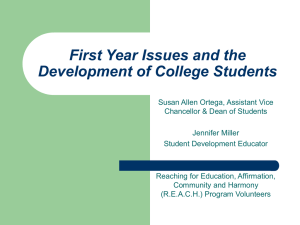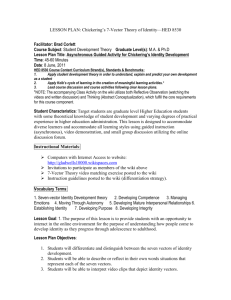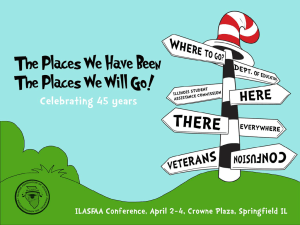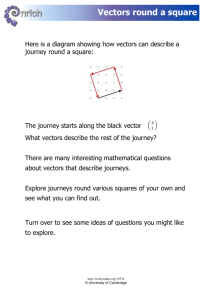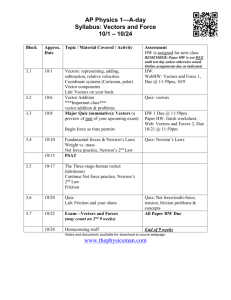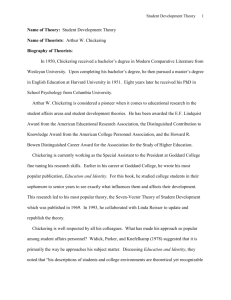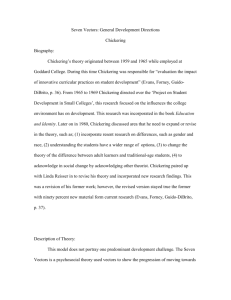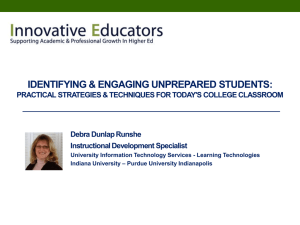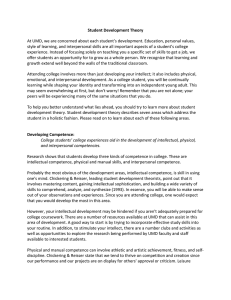Running Head: Theory to practice
advertisement
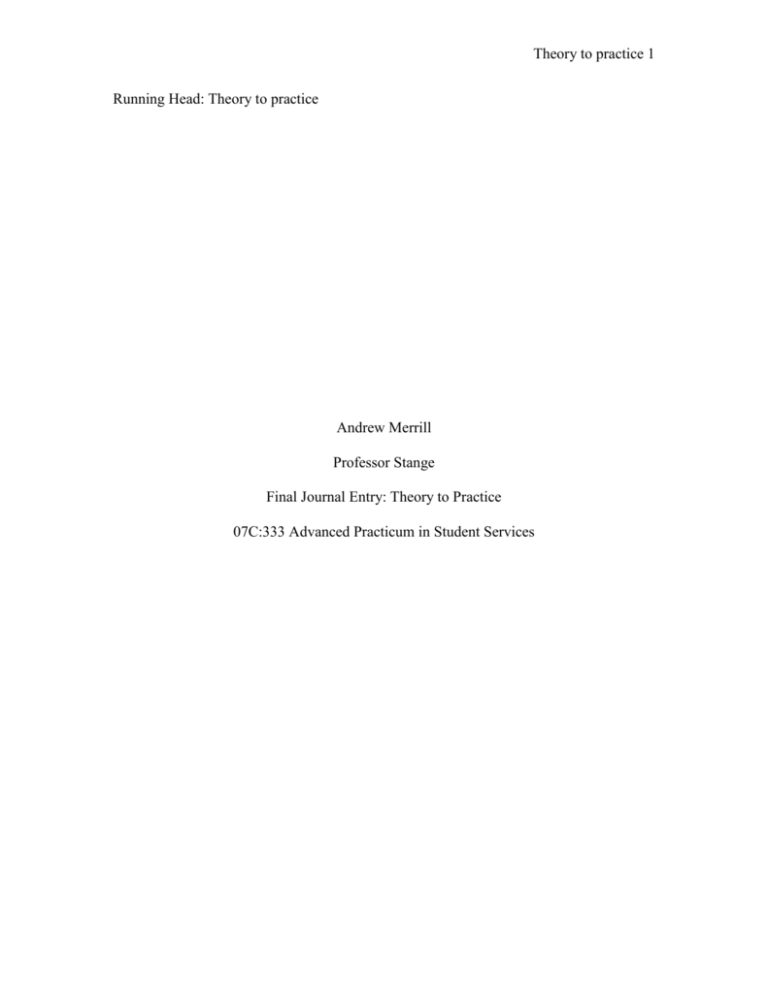
Theory to practice 1 Running Head: Theory to practice Andrew Merrill Professor Stange Final Journal Entry: Theory to Practice 07C:333 Advanced Practicum in Student Services Theory to practice 2 Over the course of the semester I have been able to work with students and see a little bit of theory in practice. The clearest examples that I could think about were around homecoming speaking with a few students about their future careers. A lot of my theoretical studies have focused on career related models and the overall development such as Chickering’s seven vectors. It has been difficult for me to think about theory and its relation to my work at the College of Pharmacy. In this paper, I will discuss a two theoretical models and how I used the information in my practice. Before I begin I would like to write briefly about something Professor Stange said at my last meeting. I believe he said that sometimes theory is not always apparent in our workplace and needs to be an informational guide. We talked about theory and how it will be a useful tool for my first work experience, but might not be always apparent. Discussing theory as a tool rather than the basis for work was very helpful in explaining why our program uses so much theory. I really thought about my knowledge of theory and how I will use it as a resource when I need it rather using it as the basis for my work. The interesting thing that I noticed with the students I worked with at Homecoming was the correlation between their academic year and their level on Chickering’s vectors. For instance, almost all of the first year students I met with were moving through autonomy toward interdependence. They were constantly in need of validation by their fellow classmates and by me. I imagine this is typical for new students in the Pharmacy program because they are continuing to adjust to their new surroundings. The second year students were much more concerned with developing relationships with others and probably establishing their identity. This was difficult for me to exactly pinpoint because they were probably transitioning through the vectors. The third year Theory to practice 3 students were clearly in the developing purpose stage since they were looking towards the future and potential careers. Speaking with students throughout the week really helped me think about where they were along Chickering’s vectors. The other theoretical model that I used (primarily with the third years) was Tiedeman’s career development model. Tiedeman’s model is my favorite career model because it is non-linear. I appreciate the idea that an individual can jump from one point on a model to any other point on a model. It seems to relate to almost everyone regardless of who they are. I am always interested to hear what student’s career plans are because I currently work in the Pomerantz Career Center. A lot of the students beginning the process were in the either the crystallization or choice stage. They were discussing what location they wanted to work in and the primary work they would be doing in the future. It was interesting to talk to a few of these students and gauge where they might be along Tiedeman’s model. I mentioned the career center as a resource, but there are also staff employed at the college of education that help with career related issues. Depending on which area of work I go into I think theory will compliment my work. I believe it really should be used as either a guide or as a tool, but shouldn’t be the primary purpose of my work. It was really helpful to apply these two models to my work and think about where students are developmentally. I will continue to reflect on how theory is working in my site and how it continues to influence me.

